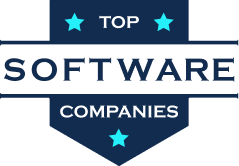Is Hybrid Outsourcing the Future of Global Software Delivery?

“Getting the right people with the right skills into the right roles has never been so difficult,” says Gina Smith, research director for IDC’s IT Skills for Digital Business practice.
Smith’s statement echoes the harsh reality of the modern business world. Her words rest on solid evidence. A recent IDC survey reveals that nearly two-thirds of North American IT firms missed their revenue goals in 2024.
The reason? A lack of IT skills.
But this isn’t limited to North America. Companies across the globe face a growing IT skills shortage. Besides impacting revenues, it causes a decline in customer satisfaction.
What’s the solution to this critical issue?
A flexible model, like hybrid outsourcing. It merges the benefits of in-house teams with the cost savings of offshore services. Thus, it helps businesses scale and innovate quickly and smartly.
What Is Hybrid Outsourcing in Software Projects?
When it comes to building a novel product, startups face the most challenges. One of the major ones is hiring top talent. Many lose out on the best staff to competitors due to budget constraints.
That’s why smart CEOs of most young companies are turning to hybrid outsourcing. The model eases your in-house team’s load. At the same time, you don’t have to bear the expenses of new hires.
Hybrid outsourcing can take various forms. It can combine your in-house, onshore, and third-party providers. Another option is to partner with offshore and nearshore teams on the same continent. The teams can be in different countries performing distinct operations. Yet another route is partnering with a service provider. Here, the provider’s team joins your local staff. This is suited for long-term, complex projects.
Hybrid outsourcing is born out of the fast-paced nature of the business world. With constantly evolving customer needs, businesses have no choice but to become more competitive. Using novel models like this isn’t optional. It has become a necessity. By offering a favorable blend of cost and operational efficiency and the best talent, hybrid outsourcing allows businesses to stay competitive.
The Basics of Hybrid Outsourcing
Hybrid aproach is a blend of nearshore, offshore, and onshore models. Each of them has its own benefits.

Nearshore
In a nearshore model, teams are located in nearby nations. The model offers a balance between cost control and cultural and communication unity.
Onshore
Here, teams are present in the same country as yours. It offers the highest level of cultural harmony. The onshore model also ensures real-time dialogue and collaboration between teams.
Offshore
In an offshore model, teams are located in far-off lands. It benefits you with massive cost savings. At the same time, you get access to a broad talent pool. The only slight downside is the time zone gap and communication issues.
What Makes up the Hybrid Outsourcing Model
Hybrid outsourcing consists of internal and external teams. Below are its key elements.
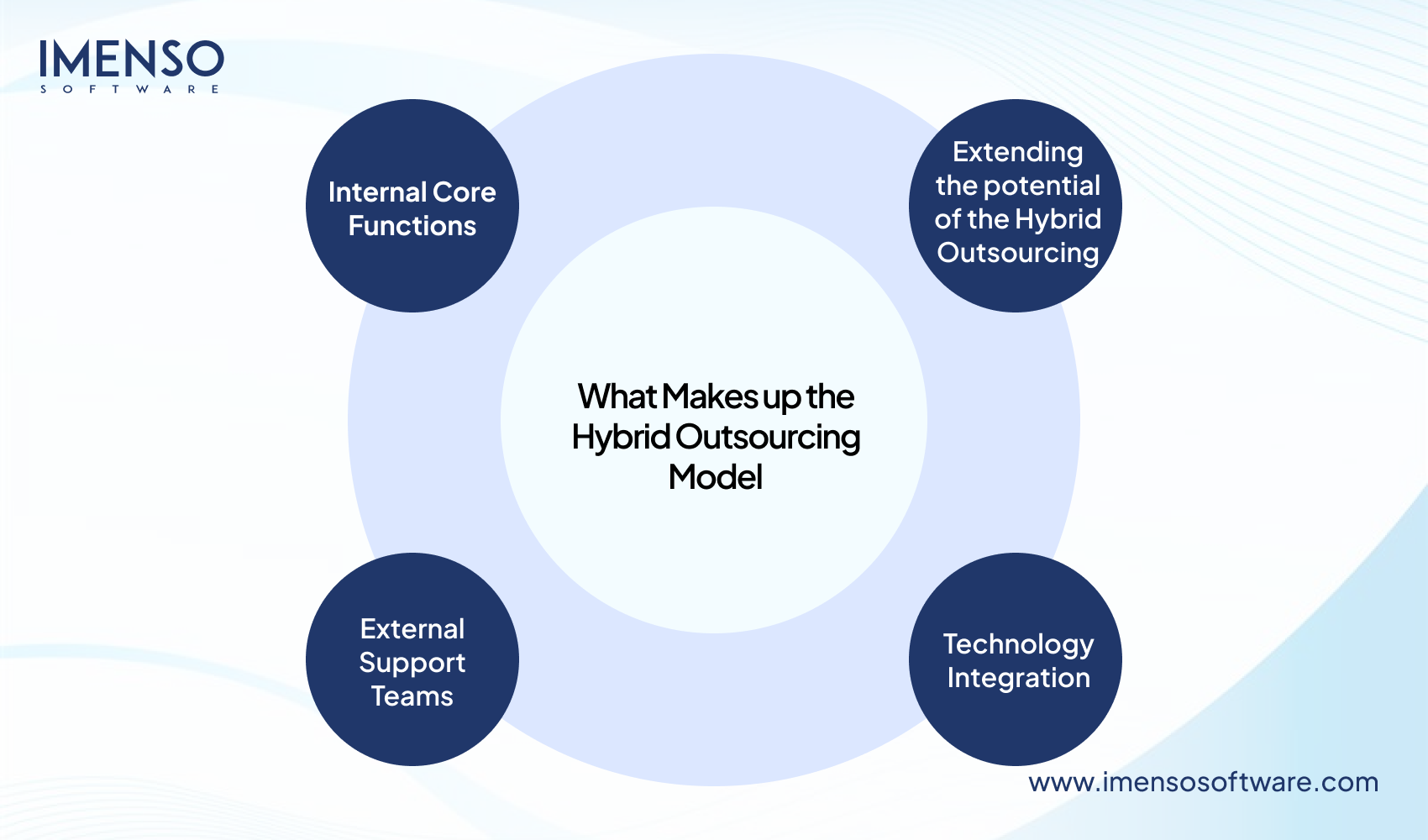
Internal Core Functions
These functions remain within the business in hybrid outsourcing. They mainly comprise strategy, leadership, and compliance-driven tasks.
External Support Teams
Businesses outsource the non-core tasks. These are usually IT support, customer service, and operational processes.
Technology Integration
Good communication is the basis of success in a hybrid model. These models depend on quality collaboration tools. Besides, businesses also use cloud-based systems and automated processes. This closes any gaps between local and outsourced teams.
Extending the potential of the Hybrid Outsourcing
To boost the returns from a hybrid approach, companies can add business analysts and IT consultants to their services. Here’s how it works.
a. Business Intelligence (BI) Analysts
They thoroughly explain the client’s business needs and the current situation.
b. Solution Architects
These people assess existing systems. They create the technical vision for the project’s goals.
c. IT Efficiency Consultants
They build automated solutions. These systems satisfy the client’s needs and help achieve the project’s goals.
d. Middleware Analysts
Middleware analysts ensure proper integration and communication between various systems.
e. Data Scientists
They spot data analytics issues. By seeing issues early, they help the business identify and make the most of opportunities.
In 2024, approximately 65% of businesses globally opted for the hybrid model (not to be confused with a hybrid mix of working from the office or home). It is estimated that after 2025, more than 80% of businesses will adopt hybrid models.
Why Do Startups Choose Hybrid Outsourcing for Software Delivery?
The hybrid approach offers various benefits. Below are some of the key ones.
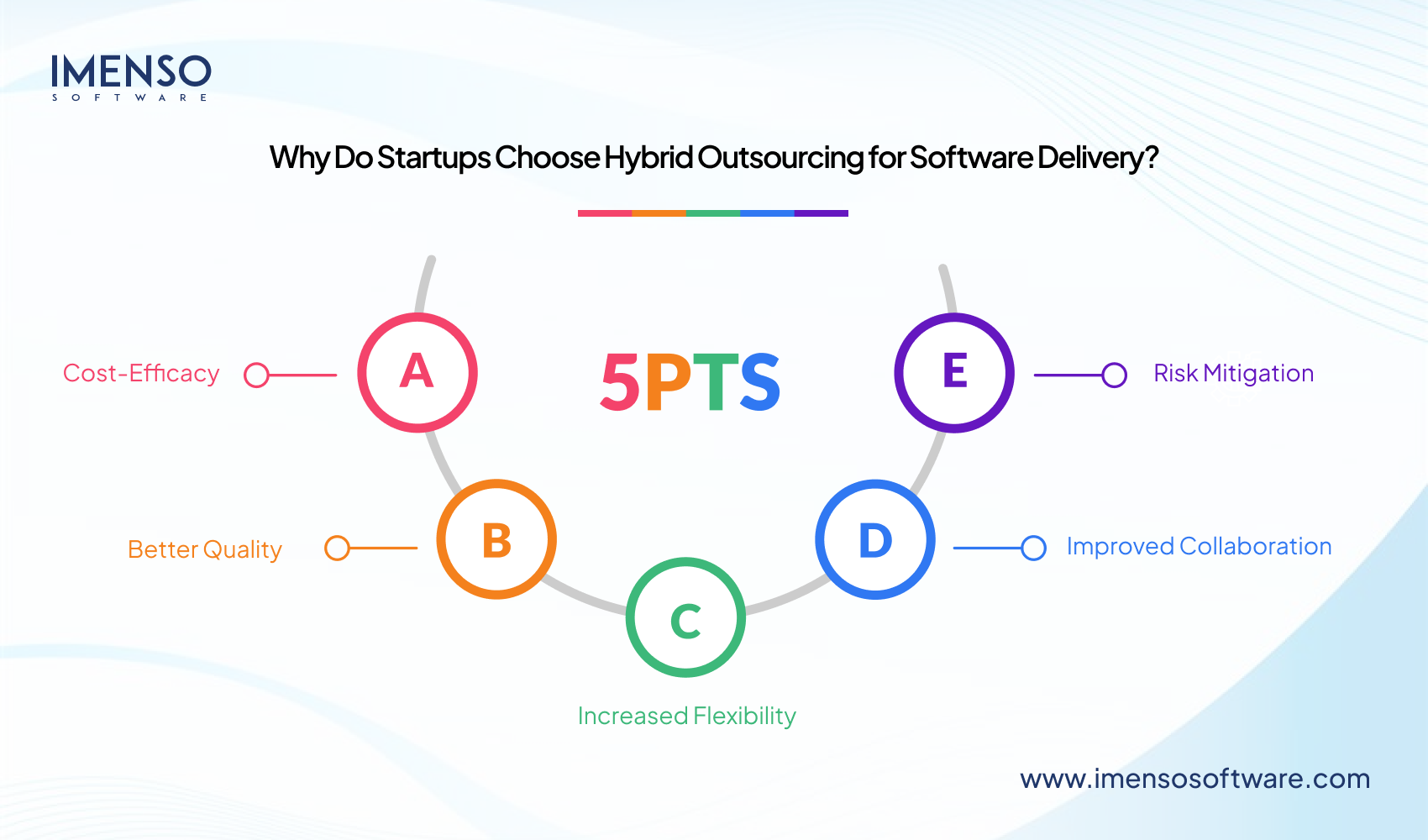
a) Cost-Efficacy
A hybrid model can optimize costs. Startups can make the most of the lower labor rates in offshore areas for certain tasks. Parallelly, they can maintain in-house control for crucial operations. This allows them to achieve greater cost savings. The best thing is that they cut costs without sacrificing quality or control.
Here’s an example. A startup in the US can save almost 40% on development expenses. This is possible by outsourcing certain tasks to Asia. In this model, they can retain key functions like project management with their in-house staff.
b) Better Quality
A hybrid model allows businesses to tap into both onshore and offshore talent. It thus lets you deliver the best quality output. Onshore teams can work on high-level tasks. They focus on things that need good domain knowledge. Concurrently, the offshore teams can manage time-intensive development activities.
A hybrid model optimizes the division of labor. This leads to better results in terms of quality as each team focuses on what it can do best.
c) Increased Flexibility
Today’s fast-paced world demands that businesses swiftly adapt to the dynamic needs. A hybrid model lets you achieve exactly that. It allows companies to adjust and optimize onshore and offshore resources based on their needs.
Let’s suppose a company has a critical product launch. In this case, the business can increase its onshore team temporarily. This leads to better collaboration. When the product is stable, the company can scale back
d) Improved Collaboration
A successful hybrid model is defined by close collaboration between offshore and onshore teams. In doing so, it increases knowledge sharing. Not only that, but it also fosters cross-cultural learning. This, in turn, leads to novel ideas and solutions.
A diverse workforce is better able to take on and solve complex issues. Ideally, businesses using a hybrid approach should conduct regular knowledge transfer sessions. They can implement rotation programs to enable this exchange.
e) Risk Mitigation
A diverse workforce across various regions also helps prevent risks. This is because you don’t rely on one group of staff or place. It helps mitigate region-specific risks. If a location faces an issue, teams in other parts can do their work . Thus, there is no disruption to business continuity.
Who Can Benefit From a Hybrid Outsourcing Model
The hybrid approach is well-suited for:
- Big companies with complex IT needs. Such businesses require the resources to manage distributed teams.
- Businesses that want to scale quickly. But they also want to maintain control over core operations.
- Companies in regulated sectors. These businesses need to balance compliance needs with cost efficiency.
- Firms that are rolling out digital transformation initiatives. These programs require a mix of legacy system maintenance and modern development.
How to Implement Hybrid Outsourcing in Software Projects?
There are many ways to implement the hybrid model. Every business is different. However, below are some general steps that are almost everyone.
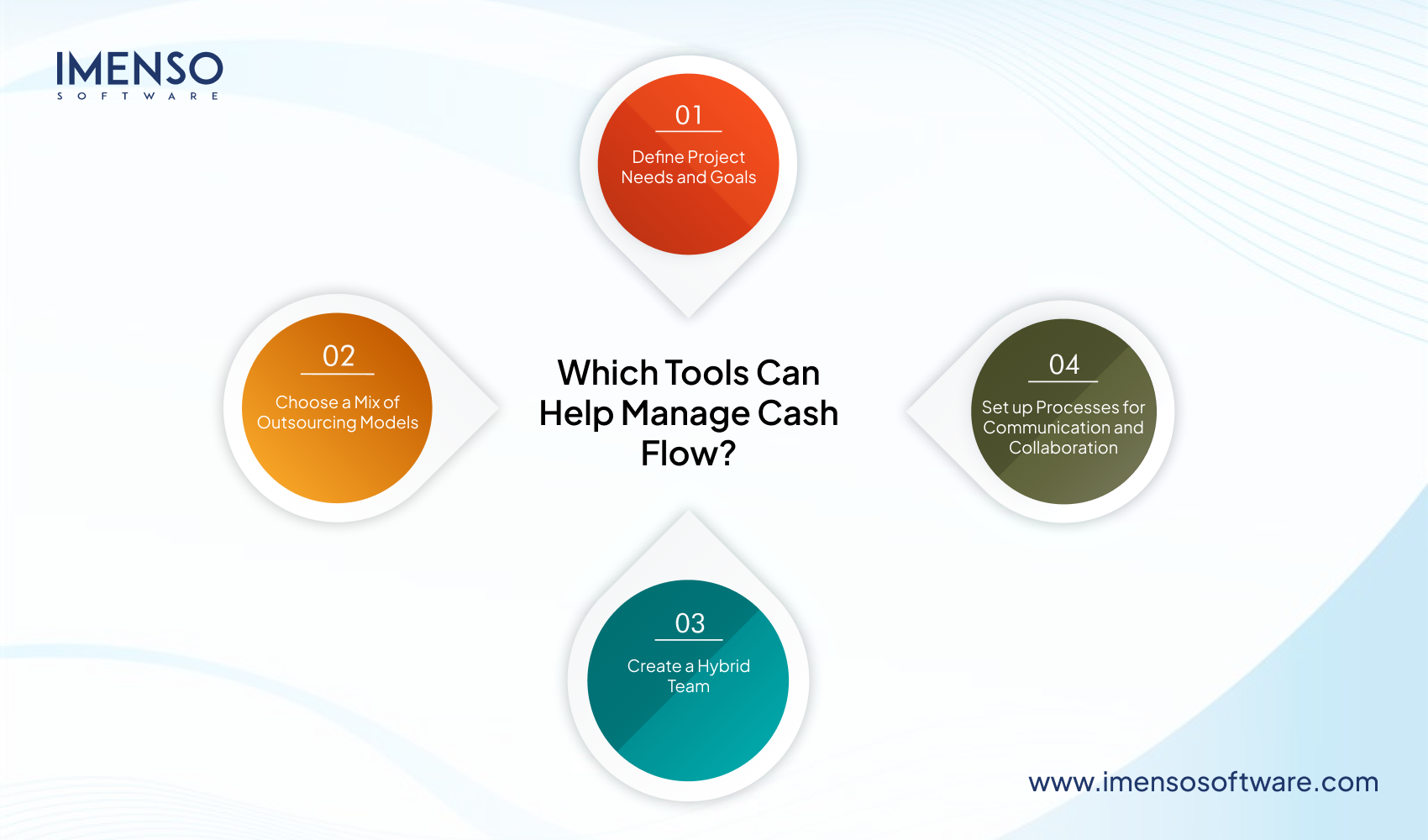
1. Define Project Needs and Goals
Begin by getting clear on your project needs and goals. This step is crucial. It guides you on the type of hybrid approach best suited for your project.
Be as specific as possible. Being vague here can misguide the next steps. Your project needs and goals should be realistic. Unrealistic goals will only cause you trouble. You’ll be unable to attain them. Moreover, you’ll face a lot of issues choosing the right outsourcing partner.
2. Choose a Mix of Outsourcing Models
Once you know what you want, determine the types of outsourcing models that will help you achieve that. Think about combining nearshore, onshore, and offshore models. Below are the factors that govern this decision.
- The scope of the project
- Your project’s timeline
- Time zone differences
- Cost to hire external teams
- Your project’s budget
- Cultural differences
- Communication needs
- The tech proficiency that your project needs
- The strengths of your in-house team, as well as their weak points
- Your personal views
3. Create a Hybrid Team
Create your team based on the criteria above. You’ll be choosing people from various locations. Once you’ve assembled the team, decide a way to manage them.
Remember, everyone comes from different parts of the world. They talk in another language. Don’t let this hinder your project’s progress. To make things fluid, ensure that everyone can at least speak and write basic English. It will reduce the chances of errors.
Another crucial thing is to figure out a time when you can communicate with relevant people. Find a time that works for everyone. This communication is critical for project supervision and management.
4. Set up Processes for Communication and Collaboration
Communication is critical for a good relationship with all your teams. Don’t forget that everyone is working from different places. A lack of effective communication derails the entire project.
So, at the start itself, detail how you would like to collaborate with everyone. Determine communication channels and their purpose.
Another critical part is defining the style of communication and collaboration. You must communicate in a way that everyone is comfortable with. Consider the cultural differences and work behaviors of your teams. Then, define a suitable communication style.
How to Ensure Software Delivery Success with Hybrid Outsourcing
A hybrid approach can give you the best of both worlds. But to get the desired results, you must overcome its challenges. Below, we have provided solutions for common issues businesses face.
-
Managing Teams Across Time Zone Differences
The most prevalent issue is managing distributed teams. Members work across various time zones. You must manage them effectively for smooth collaboration. It’s also crucial to ensure timely project delivery. Some good strategies include:
Overlap Working Hours
There should be some shared in working hours between various teams. This ensures real-time dialogue and decision-making.
Use Collaboration Tools
Tools like Slack, Zoom, or Microsoft Teams help maintain continuous communication. They also facilitate asynchronous updates.
Agile Methodology
Use Agile project approaches. They support collaboration between remote teams. Agile methods also promote iterative development.
-
Ensuring Fluid Communication and Collaboration
Smooth dialogue is critical for effective software outsourcing. Ideally, you must set up clear communication rules from the outset. Follow the advice below to ensure good communication across teams.
Set Clear Expectations
Establish clear project goals, timelines, and checkpoints. This will avoid confusion. It will ensure that all teams work toward the same goals.
Regular Meetings
Plan regular sprint reviews and progress meetings. This lets everyone remain aligned. Video conferencing plays a key role here. It closes the gap between teams in various regions.
Shared Documentation
Use shared documentation systems to unify project documentation. Some examples are Confluence and Google Docs. This makes them accessible to all teams.
Cultural Sensitivity
Consider cultural differences in communication styles. Provide cultural training to foster a more cohesive team dynamic across various regions.
-
Optimizing Resource Allocation for Each Project Phase
The hybrid model offers a key benefit over others. You can assign resources based on the unique needs of every project phase. Below are some guidelines to follow.
Initial Planning and Strategy
During planning, keep the work in-house or onshore. It helps maintain strategic control. If you have cultural compatibility with your nearshore team, they can help with high-level planning.
Development and Execution
Allocate routine tasks to offshore teams. These include coding, testing, and bug fixing. These are the most cost-efficient teams. So, they are ideal for these tasks. But for time-sensitive or complex projects, use your onshore or nearshore teams.
Quality Assurance and Deployment
Onshore or nearshore teams can manage QA and deployment. This decision mainly depends on your project’s criticality.
Achieving Software Delivery Success Through Hybrid Outsourcing
In the current market environment, traditional outsourcing isn’t enough. To succeed, businesses need the perfect blend of quality and cost savings. Hybrid outsourcing that blends various outsourcing models, helps businesses overcome roadblocks software delivery.
But results only come when you can manage teams well. This guide has given you various strategies to resolve different issues that might arise. Hopefully, you’ll be able to use the hybrid model to build high-performing teams that help you achieve project success.
Frequently Asked Questions
- What is the outlook of outsourcing?
In 2025 and beyond, outsourcing isn’t likely to happen for routine tasks. They will look for tech providers that use the latest technologies. More automation and the use of AI will be the norm. There will also be a search for partners with niche expertise.
- Why do companies choose India for outsourcing?
India has the biggest workforce. This workforce is highly qualified and skilled. Businesses in the West can tap into this talent at much lower payroll costs. This makes India a favorable destination for outsourcing.
- What percentage of IT is outsourced?
37% of IT operations are outsourced. It is the most outsourced sector. On average, companies allocate around 13% of their IT budget to outsourcing.
- Is global outsourcing good or bad?
Global outsourcing offers benefits like lower cost and access to a wider talent pool. But it also has downsides, such as job displacement and some quality issues. Ultimately, whether it’s good or bad depends on the specific context and how a business manages it.
Want more information about our services?
Similar Posts

A Step-by-Step Guide to Developing a Minimum Viable Product (MVP) in 2025
Two roommates Brian Chesky and Joe Gebbia on a breezy day in October 2007 planned to rent out their apartment’s air mattresses to the attendees of a local conference. They called it “AirBed & Breakfast” and later shortened it to a fancier, “Airbnb.” At this time, they had a simple Minimum Viable Product (MVP). It […]...
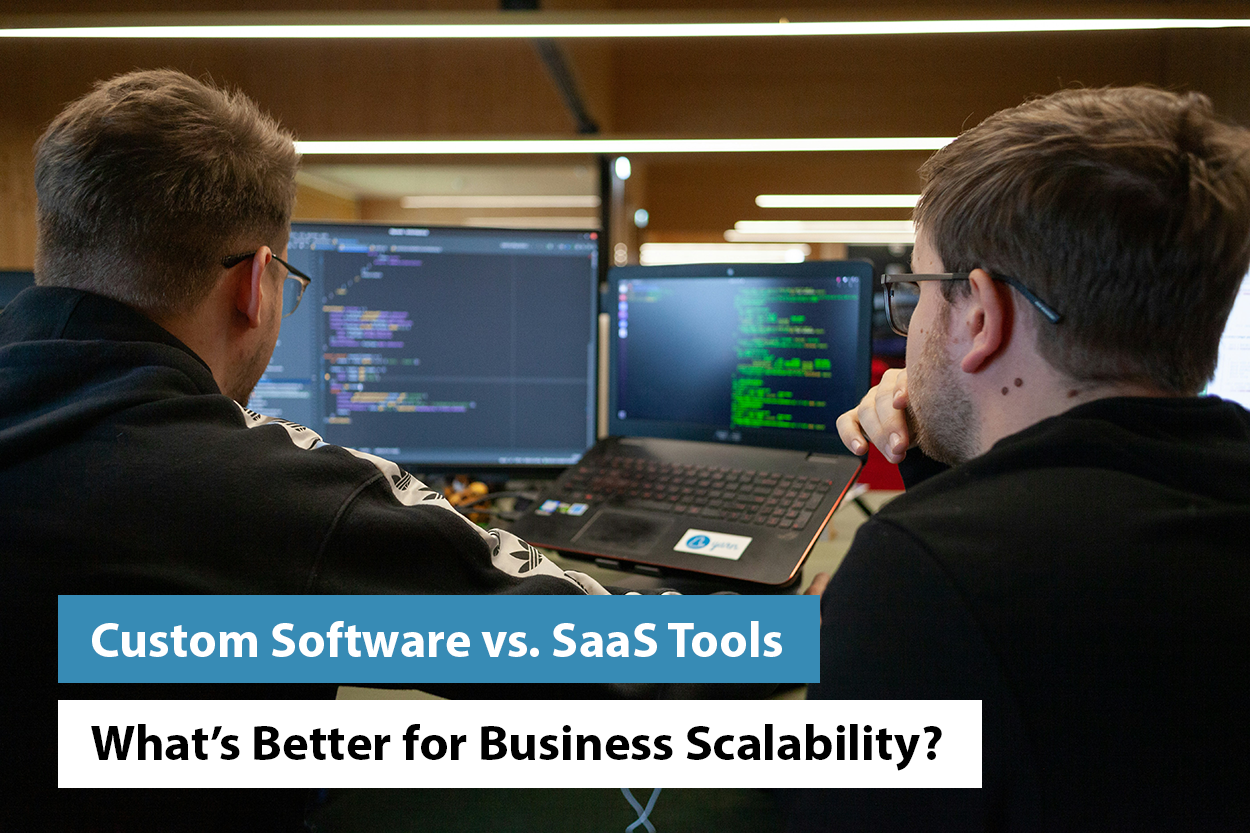
Custom Software vs. SaaS Tools: What’s Better for Business Scalability?
Are you planning to scale your business in 2025? Perplexed about picking custom software over SaaS tools or vice versa. You are not alone! This is a make-or-break business decision. Hence, your goals, team, and timeline become important to consider before you conclude. Since you’ve got a growing business and things are moving fast, you’re […]...

Essential Strategies for Offshore Development: The Complete 2024 Guide
Ever wondered how businesses keep up with this crazy pace of technology and remain competitive in today’s Global market? Offshore development remains at the apex of all the strategies that have deflected the course of action in a world where time is equated to money. Of this whopping 67%, the company takes out software development […]...


